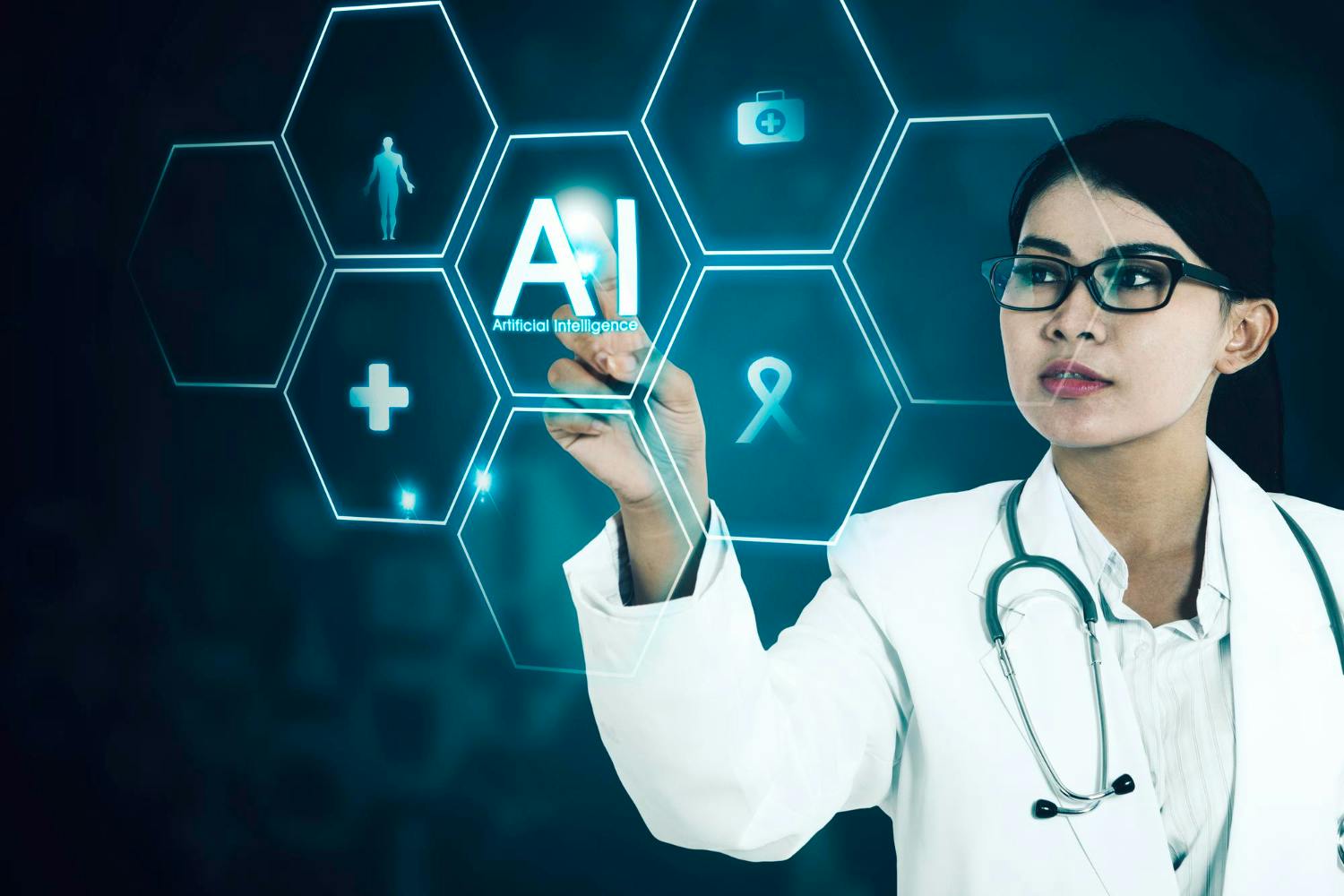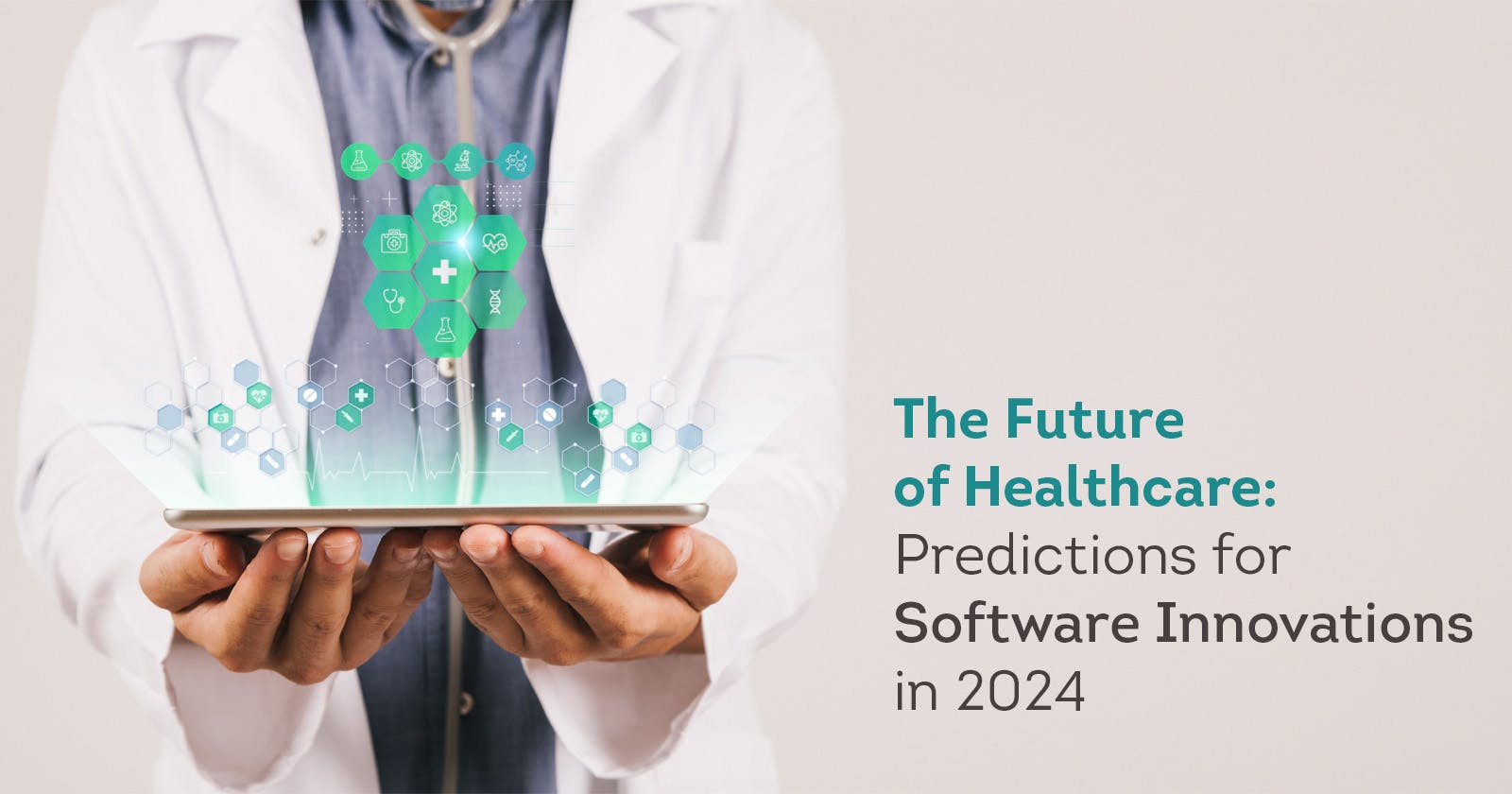The Future of Healthcare: Predictions for Software Innovations in 2024
Table of contents
- Introduction to a New Era of Healthcare
- AI-Driven Healthcare: Enhancing Diagnostic and Treatment Capabilities
- The Impact of 3D Printing in Medical Applications
- Revolutionary Gene Editing with CRISPR
- Virtual Reality: A New Dimension in Healthcare
- Smart Bandages: Pioneering Wound Care
- Software Decision-Making in Healthcare Organizations
- Overcoming Barriers to Technological Adoption in Healthcare
- Enhancing Interoperability Among Healthcare Systems
- The Role of Artificial Intelligence in Future Healthcare Policies
- Looking Forward: Embracing Change and Innovation
- Conclusion: A Promising Horizon
The technological revolution is at the door of healthcare, and software innovations are forging ahead to define the coming landscape. By 2024, a wave of disruptive development led by ever-advancing artificial intelligence (AI), 3D printing, gene editing, and other technologies will engulf the planet. Such technologies promise improved efficiency and patient outcomes, revolutionizing the manner of offering services in the field.
Introduction to a New Era of Healthcare
As the year 2024 comes in, it is the opportunity for the healthcare industry to grasp the software innovations like never to deal with issues that are of necessity, such as the treatment of diseases, management of patients, and accessibility of healthcare. The innovations shall most be centrally towards the revolution of practices in healthcare to become personal, effective, and cheap.
The Role of Software in Modern Healthcare
Innovations in software are progressively turning out to be the mainstay of the modern healthcare system, and they easily integrate emerging technologies while aiding in better service to the patient. The merging of software with new age technologies is expected to drive some of the major reforms in the delivery and management of healthcare.
AI-Driven Healthcare: Enhancing Diagnostic and Treatment Capabilities

Artificial intelligence opens the way for new medical solutions; it represents a chance in the field of diagnostics and treatment. The possibility that algorithms will be able to process a great amount of data quickly and precisely opens a new era in patient treatment. It will allow for establishing diagnoses at the highest level of accuracy and curing even the smallest details of the problem.
Predictive Analytics and Personalized Medicine
Hence, AI will be an even broader influence than in basic diagnostics, for it often comes in predictive analytics, wherein models developed by machine learning draw predictions on risks and outcomes of the patient that enables early strategies of intervention. By examining patient data to derive treatments tailored to the individual's specific genetic, lifestyle, health history profile, this optimizes the treatment offered by a physician practicing personalized medicine.
The Impact of 3D Printing in Medical Applications
From prosthetics to bioprinting, it is literally a revolution in many areas within healthcare. This ability is much cheaper medicine since any necessary medical device or implant can be produced and, at the same time, improves patient care in general.
Customized Prosthetics and Organ Printing
Exemplary application: Production of custom prosthetic extremities that fit better, work more effectively, and are more comfortable to the user. Further advancements in bioprinting could also allow the printing of complex tissues, and possibly whole organs, whereby the organ shortage would be replaced by another crisis.
Revolutionary Gene Editing with CRISPR
CRISPR, gene editing technology, is all set to totally change how any kind of genetic disorder or diseases are treated, including cancer and HIV. Precision and effectiveness of the edition of DNA at the defined sites make it a powerful tool for the scientist in the area of medicine towards the development of treatment.
Targeting Genetic Diseases
CRISPR can be used to edit genes directly and cure diseases for which genes are responsible, thus curing the previously thought incurable diseases. This brings the potential for great advancement with regard to life-threatening diseases, perhaps eradication soon.
Virtual Reality: A New Dimension in Healthcare

Certainly, these are revolutionizing the sector with new-age solutions for surgery simulation, patient therapy, and medical training, all offered by virtual reality. Other than helping one to develop the skills of carrying out different types of surgeries, VR also aids in treatment to be done on patients but in an administered and safe environment.
Training and Therapeutic Uses
In reality, the VR has also been applied by surgeons to simulate rather complex operations before the real operating time, reinforcing their precision and reducing risks. However, for patients, VR turns into a kind of therapy under treatments for such conditions as post-traumatic stress disorders, anxiety-related ailments, and rehabilitation after a stroke.
Smart Bandages: Pioneering Wound Care
It now has been developed, based on research by Stanford University, into a smart bandage. This bandage keeps track of how a wound is healing, delivers treatment, and can even reduce scarring by promoting tissue healing.
Enhancing Healing Processes
Smart bandages not only monitor the process of wound healing but also alter treatment regimens based on received real-time data; therefore, a patient will have fast and effective healing effects. This is just an example of how software and sensor technology may further help in patient care.
Software Decision-Making in Healthcare Organizations

That is according to a survey done in July 2023 on how complex software acquisition in health gets. The survey indicated that 67% of software buyers took 3-6 months to make a decision and, if hastened, there is often regret.
Importance of Careful Selection
This signifies the importance of customer reviews, product trials, taking expert advice, and even having knowledge from past experience for making informed choices of the software. All such things, therefore, remain instrumental in making sure that the selected software is meant specifically for the healthcare facility and that its implantation over current systems is smooth.
Overcoming Barriers to Technological Adoption in Healthcare
However, promising progress has a share of challenges. Change resistance, high costs of implementation, and insufficient training stand as essential barriers for health care organizations to achieve the utmost positive impacts brought by this innovation.
Addressing Resistance and Skepticism
There may be skepticism due to unreliability in software-driven decisions and skepticism or doubt that health practitioners may have toward new technologies. To address this issue, the major role is to encourage organizations to get involved in a culture of continuous learning and demonstrate the benefits showing technologies that are complementary and not substitutional to human expertise.
Financial Implications and ROI
New technologies are, however, introduced at costs that, to many facilities, remain the greatest barrier in operation, more so to those that work within a very tight budget. Such upfront costs, however, have merit when considering a long-term perspective for return on investment (ROI) from improved efficiencies and patient outcomes. Additionally, seeking partnerships and grants can alleviate financial burdens associated with technology adoption.
Training and Skill Development
Continuous training and professional development help the staff in making an effective use of new software tools and technologies. In this view, therefore, the healthcare institutions should invest in training programs on a "need-to-know" basis regarding the usage of new systems to make sure that the staff is competent and comfortable with such systems. This would work towards increasing the adoption rate and, in the long run, improve the general effectiveness of the implemented technologies.
Enhancing Interoperability Among Healthcare Systems

Interoperability then becomes a cornerstone of any modern and successful IT strategy in healthcare, thanks to the cooperation and communication of the software solutions with all kinds of healthcare platforms and systems. Improved interoperability enables good exchange of data, which is very much necessary for holistic patient care and support of health management.
Building a Cohesive Ecosystem
Comprehensive environments that encourage unbridled communication between such diverse systems and technologies will ensure that healthcare providers receive complete and accurate data about their patients. Better decision-making and resource management for improved patient care outcomes depend on this.
Standards and Protocols
For this interoperability to be realized, it ought to be in conformity with international standards and protocols. In fact, the standards, if developed and implemented, could advisably guide software developers and even institutions of the health care sector to form harmonious systems compatible and working together with the least interference.
The Role of Artificial Intelligence in Future Healthcare Policies
As AI takes root deeper into healthcare, its influence will be felt, not just in the clinical applications but also in the health policies. Policymakers will have to consider long-reaching implications of AI-driven technologies, including ethical and privacy dimensions regulation, to ensure their safe and fair use by the providers in the delivery of healthcare.
Ethical Considerations and AI Governance
This re-emphasizes the role of ethical guidelines and governance of AI use in healthcare to bring out potential biases and make the decisions done by the AI systems transparent and accountable. This surely will be able to keep the confidence of patients in AI-enhanced healthcare services.
Privacy and Data Protection
The more the application of software tools like AI, the more complex but important it is to ensure that the patient's data is well protected. Robust data protection laws and regulations must develop side by side with technological progress to ascertain sensitive health information not to be breached and gets no access.
Looking Forward: Embracing Change and Innovation

Embracing that change and fostering the innovation that will deliver it must become an imperative for caregivers, indeed, as we look toward the future of healthcare in 2024 and beyond. Advanced software solutions and technologies have indeed improved the operation of the healthcare facilities and the quality of care availed to the patients.
Cultivating an Innovative Culture
It is paramount to healthcare organizations for keeping at par in the dynamic field, development of a culture that encourages and ensures innovation. This means investment not only in new technologies but also in an open mindset toward experimenting with new approaches and solutions in healthcare.
Collaboration and Partnerships
Developed and innovated software solutions will find a place to be implemented by collaboration among healthcare providers, technology companies, and academic institutions. Such forms of partnerships are of very great importance in pooling resources and knowledge and expertise in dealing with the sophisticated problems presented by modern healthcare.
Conclusion: A Promising Horizon
Built by the promises that software innovations and new technological advances hold, the future of health for 2024 opens up potentials even with the challenges at hand for better patient care, operational efficiency, and more personalized treatments. Healthcare practitioners who are ready to embrace these changes and buy into the new technologies will be able to adapt to growing customer demands much more easily, even in the digital era. And the journey of advancing these technologies and journeying into a more patient-centric healthcare system goes on, promising new lights and more efficiency down the tunnel for all its stakeholders of health.

